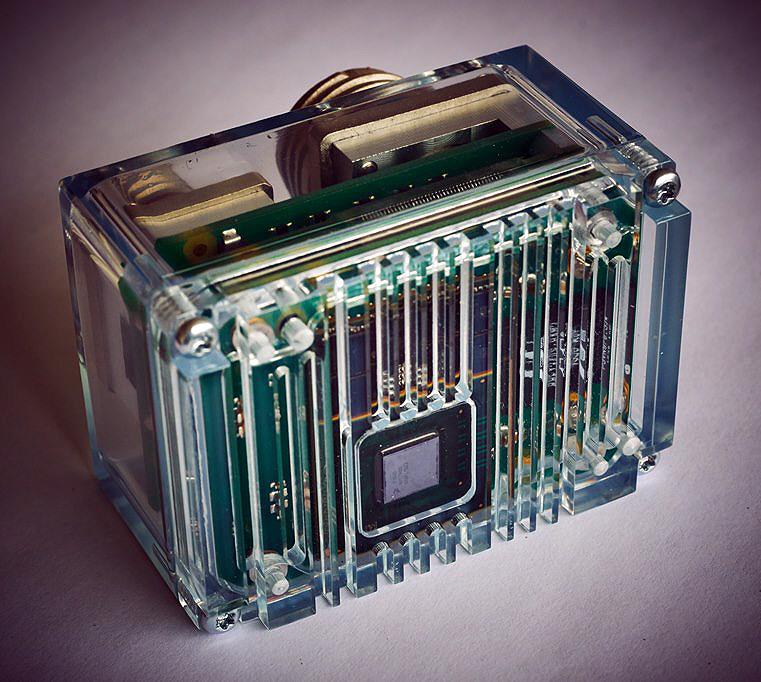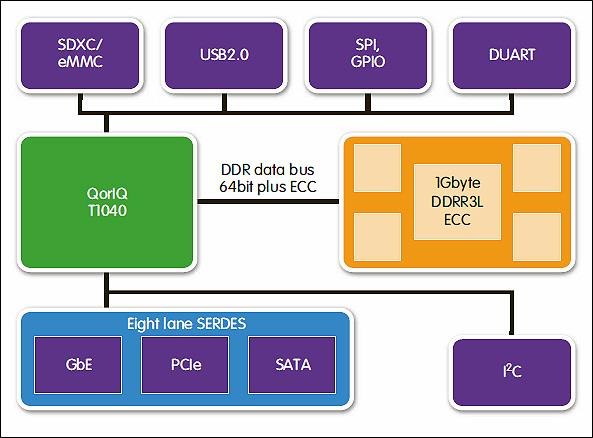It’s with this in mind that e2v has partnered with French electronics design specialist Adeneo to develop a pocket sized avionics computer that weighs less than 300g.
Eric Marcelot, e2v’s marketing and business development director, noted: “With the ever growing SWaP constraints within the aerospace market, we are proud to have developed a powerful, ultra compact computer that’s available commercially.”
The avionics computer, which will be available ‘off the shelf’, measures 70 x 50 x 40mm and is said by its developers to be suitable for a range of avionics applications, including unmanned aerial vehicles. The partners say the device will be ‘flight ready’ in 2018. At the heart of the device is e2v’s Qormino processor.
Adeneo, part of the Adetel group, undertakes electronics design for markets such as aeronautics, rail, industry, automotive and medical.
Nicolas Chantier, strategic marketing manager with e2v, said both companies have been long term members of Freescale’s Connect Partner Programme; a global network offering customers technology and engineering services. “So we have met before. And we are also members of the local aerospace cluster in Grenoble.

“That gave us a reason to meet,” said Chantier, “and to understand each other’s capabilities in greater detail. When we did that, it created a basis for future cooperation.”
The two companies are said to complement each other. “Adeneo has a broad R&D capability,” Chantier continued, “and works with big aerospace companies, but without being a prime contractor. It also has a good reputation as a component manufacturer.”
e2v, meanwhile, has been supplying high reliability semiconductors based on the PowerPC and 68k architectures into demanding applications such as civil aviation, defence, space, industrial and telecommunications.
A demonstration version of the avionics computer
Marcelot continued: “We decided between us that we could create a computer with a small form factor and that we could take that to market together.” However, the partnership is not restricted to the two companies.
And that aim is highlighted by Marcelot’s view that the project to develop the avionics computer had multiple objectives. “While one objective was to develop the device as a demonstrator, it was also a valuable exercise for us to create the components and to show their performance in the computer.”
While developed with the aerospace sector in mind, the computer also has other applications. “We’re talking with all the prime aerospace contractors about how they could use the computer,” said Marcelot, “and they’re all interested. Talking to one doesn’t exclude us talking to the others. But we also have manufacturing companies looking to work with us.”
At the heart of the avionics computer is a three layer PCB developed by Adeneo which integrates the QT10A, the first member of e2v’s Qormino family. The QT10A features a QorIQ T1040 processor, along with 1Gbyte of DDR3L memory, which operates from a 1.35V supply. These elements are mounted on a custom substrate which e2v says creates a powerful processing solution.
François Sébès, Adeneo’s president, added: “Combining our core competencies with the benefits of e2v’s Qormino in the computer design, we’ve been able to keep our competitive edge in developing innovative embedded computers.”

Fig 1: Block diagram of e2v's QT10A processor module
Chantier noted that the T1040 had not been modified. “But we have mounted the part on a substrate that integrates processor and memory.” That integration is said to require only half the board space of a standard design.
He added: “Implementation of DDR memory at the board level can represent significant cost and risk for designers. We’ve taken care of that and the result should appeal to project managers.” One of the benefits claimed by e2v is that designers can focus on higher level tasks.
Alongside the Qormino PCB, the computer features two further boards: one housing a solid state disk; the other handling power and PHY functions. Peripheral communications pass through standard avionic connectors.
The computer is designed for rugged applications. “We haven’t sacrificed ruggedisation for size,” he contended. “It can be mounted where customers may not have planned to put a computer. Because it is so small, they can put it in small spaces to undertake such tasks as image processing or radar analysis.”
Aerospace companies are concerned with price, said Marcelot. “One way to address this is by putting more features into a product; the pace of innovation is faster than it used to be.
“Ten or 20 years ago, we were creating hi rel variants of devices such as Motorola’s 68020. While we still have long term programmes that address this, we also need to create new types of component. If we only did hi rel work, it wouldn’t be viable. We still deliver components, but need to integrate more things that used to be done at the PCB level.”
A further benefit of the Qormino approach, said Chantier, is that it can be provided as a sub system, but the design can also be licensed.
“Developments such as this avionics computer are not outsourcing,” Chantier continued, “they are a response to what customers are expecting. We aim to bring innovation to them, providing things they didn’t expect.
“Our partnership with Adeneo is working well. We have different specialities and different market positions, so we complement each other.”
Are the needs of the defence community significantly different? “We address a range of defence requirements,” he said, “and we don’t see much difference, except for the qualification standards. And, as many military apps are airborne, the trends are similar to avionics,” he concluded.













